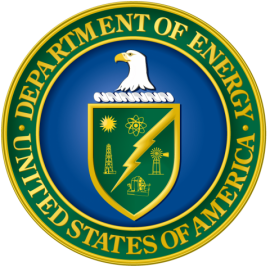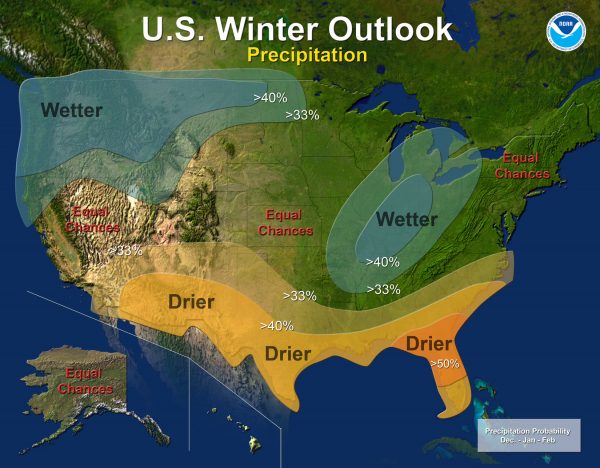AquaHarmonics has won a $1.5 million grand prize to support the development of wave energy converters. The U.S. Department of Energy’s (DOE) Office of Energy Efficiency and Renewable Energy announced the winner of the Wave Energy Prize, which is an 18-month design-build-test competition that assesses early stage wave energy technologies by comparing a wide range of device types and evaluating them against a threshold requirement for high energy capture.

What is wave energy?
Wave energy is produced by converting the energy from waves into electricity. Since 50 percent of the U.S. population lives within 50 miles of coastlines, energy captured from ocean waves provides a vast potential for clean, renewable electricity to communities and cities. It is estimated that the technically recoverable wave energy resource is approximately 1,170 terawatt hours (TWh) per year, distributed across Alaska, the West Coast, the East Coast, the Gulf of Mexico, Hawaii, and Puerto Rico. Developing just a small fraction of the available wave energy resource could allow for millions of American homes to be powered with this clean, reliable form of energy.
The wave energy sector is in its early stages of development, and the diversity of technologies makes it difficult to evaluate the most technically and economically viable solutions. Wave energy converters capture the energy to generate electricity in three main categories:
- oscillating water columns that use trapped air pockets in a water column to drive a turbine;
- oscillating body converters that are floating or submerged devices using the wave motion (up/down, forwards/ backwards, side to side) to generate electricity; and,
- overtopping converters that use reservoirs to create a head and subsequently drive turbines.
Beginning in April 2015, ninety-two teams registered for the Wave Energy Prize. As the competition progressed, a panel of judges ultimately identified nine finalists and two alternates, which were announced in March. These teams received up to $125,000 in seed funding to build scaled prototypes of their wave energy converter devices. Their common thread was a willingness to consider non-traditional options and approaches alongside their dedication to the idea of bringing viable Wave Energy Converter technologies to the clean energy mix.
With the support of the U.S. Navy, the finalist teams tested their prototype devices at the nation’s most advanced wave-making facility, the Naval Surface Warfare Center’s Maneuvering and Seakeeping Basin at Carderock, Maryland. It’s the Navy’s biggest wave pool: 360-foot long, 240 foot-wide, and holds approximately 12 million gallons of water. It’s used to evaluate the maneuverability, stability and control of scale models. Carderock built the MASK Basin in 1962 to test the scale model performance of ships, platforms, and moored systems in realistic sea conditions.
The Wave Energy Prize as Innovation
The Wave Energy Prize has “been a project we’ve been working on since even before the Wave Energy Prize was announced,” said Max Ginsburg from AquaHarmonics. “As we progressed towards the finals, it just got more and more exciting.” The AquaHarmonics team officially consists of just two engineers working out of a garage. Ginsburg’s partner is Alex Hagmuller.
CalWave Power Technologies and Waveswing America received second and third places, respectively, in the Wave Energy Prize competition, with $500,000 and $250,000 in cash prizes.
The U.S.Wave Energy Prize focuses on catalyzing the development of game-changing wave energy converters that will ultimately reduce the cost of wave energy. The wave energy industry is young and is experiencing many new innovations, as evidenced by a sustained growth in patent activity. Wave energy technology could one day provide clean, cost-competitive, reliable energy for homeowners, communities, businesses, and government in geographically suited parts of the United States. The Wave Energy Prize has already facilitated rapid technical innovation, and in the next year, the Energy Department will publish data from all the finalist teams’ test results to further accelerate advancement of this sector.
 “The Wave Energy Prize marks a significant advance for marine energy,” said Lynn Orr, DOE’s Under Secretary for Science and Energy. “This competition set a difficult threshold of doubling the energy captured from ocean waves, and four teams surpassed that goal. AquaHarmonics’ technology leap incentivized by the Energy Department demonstrates how rapid innovation can be achieved in a public prize challenge.”
“The Wave Energy Prize marks a significant advance for marine energy,” said Lynn Orr, DOE’s Under Secretary for Science and Energy. “This competition set a difficult threshold of doubling the energy captured from ocean waves, and four teams surpassed that goal. AquaHarmonics’ technology leap incentivized by the Energy Department demonstrates how rapid innovation can be achieved in a public prize challenge.”
For both planning and technology development purposes, synergies with other offshore industries may become advantageous to the wave energy industry. Opportunities to develop dedicated infrastructures – including ports and transmission grids – to support the installation and operation and maintenance of wave energy converters are also on the forefront of energy evolution.
Harnessing a wave’s energy
Basically, a wave’s energy (95%) is located between the water surface and the top quarter of the wave length. One way to categorise wave energy technologies is by how the device extracts the surge, heave or sway motions of the wave (or a combination of each) (EMEC, 2014). In general, point absorbers convert the “heave” to drive a piston up and down, terminators and oscillating wave surge converters convert the “surge”, and attenuators convert the “pitch” of the wave to drive a rotor. Over half (53%) of WEC concepts developed are point absorbers, 33% terminators, and 14% attenuators (IRENA, 2014).
The wave energy market is still dominated by start-up companies and university spin-offs, which have been focusing on bringing technologies to pre-commercial status, promoting easy access to research facilities or supporting the creation of new demonstration sites at sea. Government funding through public research and development (R&D) investments, such as the Wave Energy Prize, has been key in this process. The DOE has chosen to focus on deep water devices, as driving down the cost of harnessing wave energy and deploying wave energy technologies at a large commercial scale requires proximity to close-to-shore markets as well as high wave energy resources.
Other resources about wave energy
Water Power Technologies Office website is a valuable source of information, as it sponsors the development of innovative technologies that generate renewable, environmentally friendly, and cost-competitive electricity from water resources. The Marine and Hydrokinetic Technology Database on the Open Energy Information (OpenEI) website provides information on wave energy projects, both in the United States and around the world.
Sources:
EMEC (The European Marine Energy Centre Ltd.) (2014), “Wave Devices”, www.emec.org.uk/marine-energy/wave-devices.
IRENA (International Renewable Energy Agency) (2014), Ocean energy technology: Innovation, Patents, Market Status and Trends, International Renewable Energy Agency, June 2014.
